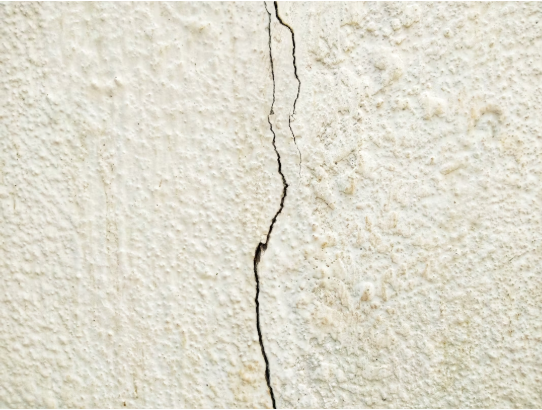Wall cracks frighten any homeowner. They’re either harmless signs of regular settling or a sign of severe structural damage that needs to be repaired immediately. Knowing what they are will allow you to save yourself thousands of dollars in unnecessary repair—or costly damage if you procrastinate. So, here are four common causes to consider!
1. Foundation Settlement
Foundation settlement is when the ground beneath your home settles or sinks unevenly. The most undesirable types of ground to do so are clays because they swell when they become damp and shrink when they dry. All that swelling and shrinking is exerting uneven pressure against your foundation and causing it to crack, typically in vertical stripes in your walls.
Sub-grade perimeter drainage issues close to your house can cause foundation settlement. When water pools outside your foundation, it will weaken and soften the soil. Such cracks will at first be small around windows or doors, then gradually extend upwards or downwards over a period of time.
2. Temperature and Moisture Fluctuations
Material expands and contracts due to temperature and humidity changes. Drywall and wood material will expand during hot summer months, and contract during cold winter months. That cycle of expanding and contracting creates stress points where the different materials are connected.
Water accelerates the process. Wet materials shrink and expand when dry. These would normally be hairline cracks at the meeting of walls and ceilings, or through window and door frames. They would be cosmetic in character but can be made worse if your home experiences extreme temperature fluctuations.
3. Normal House Aging
All houses settle to a certain extent with time. New houses especially are most likely to have tiny cracks in the initial years due to drying of wood and house settling on the foundation. It’s a normal process that creates tiny, stable cracks that will never widen with time.
Aging also affects the materials your house was built with. Paint hardens, drywall compound will contract a bit, and even wood framing shifts a bit. These are aging cracks and are usually small, straight cracks of uniform width. They are not attractive, but aren’t structurally hazardous.
4. Key Structural Issues
Some cracks in walls indicate serious problems that threaten the structural integrity of your home. Horizontal cracks in basement walls may indicate hazardous water or soil pressure. Diagonal stair-step cracks in joints of mortar typically indicate significant foundation movement.
Wider cracks than a quarter inch are cause for concern, regardless of orientation. If a coin fits into the crack, the crack is too wide to overlook. Red flags include cracks that noticeably widen over a matter of weeks or months, cracks that are accompanied by sticking doors or windows, or multiple cracks that just so happen to be in more than one place.
When to Seek Professional Help
Call in a structural engineer or foundation specialist if you see quarter-inch-wide or larger cracks, cracks along horizontal runs in basement walls, or any crack that is widening. Several simultaneous cracks, particularly if they are also being accompanied by sticking doors or sloping floors, are to be examined by a professional right away – lifting a house to repair foundation damage can alleviate concerns in the long term.
Don’t wait if cracks have appeared after bad weather, close-by building developments, or if your home has been built on a slope. All these contribute to the danger of major structural issues requiring professional examination and possibly costly repairs.
Taking Action Safeguards Your Investment
Cracks in walls may be from purely cosmetic problems to serious structural warning signs. Small, stable cracks from normal settlement won’t usually require attention right away, but big or spreading cracks need to be assessed by a professional. Monitor your walls closely and move quickly when you observe ominous changes to preserve the value of your home and the well-being of your family.












Leave a comment